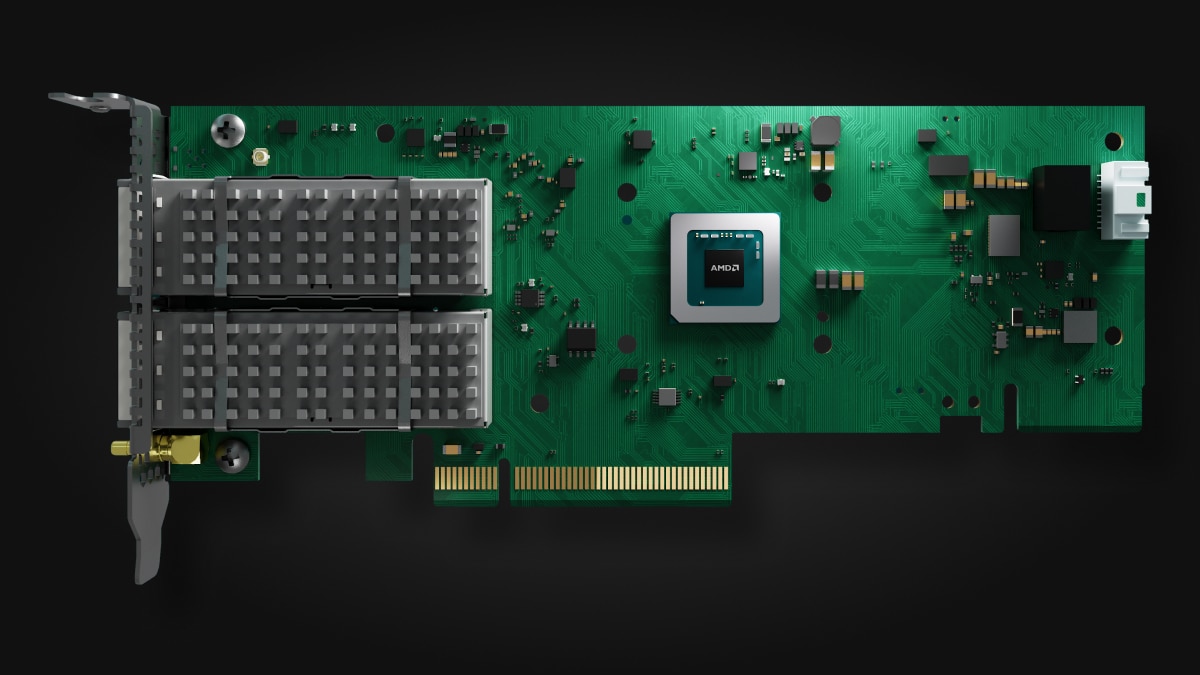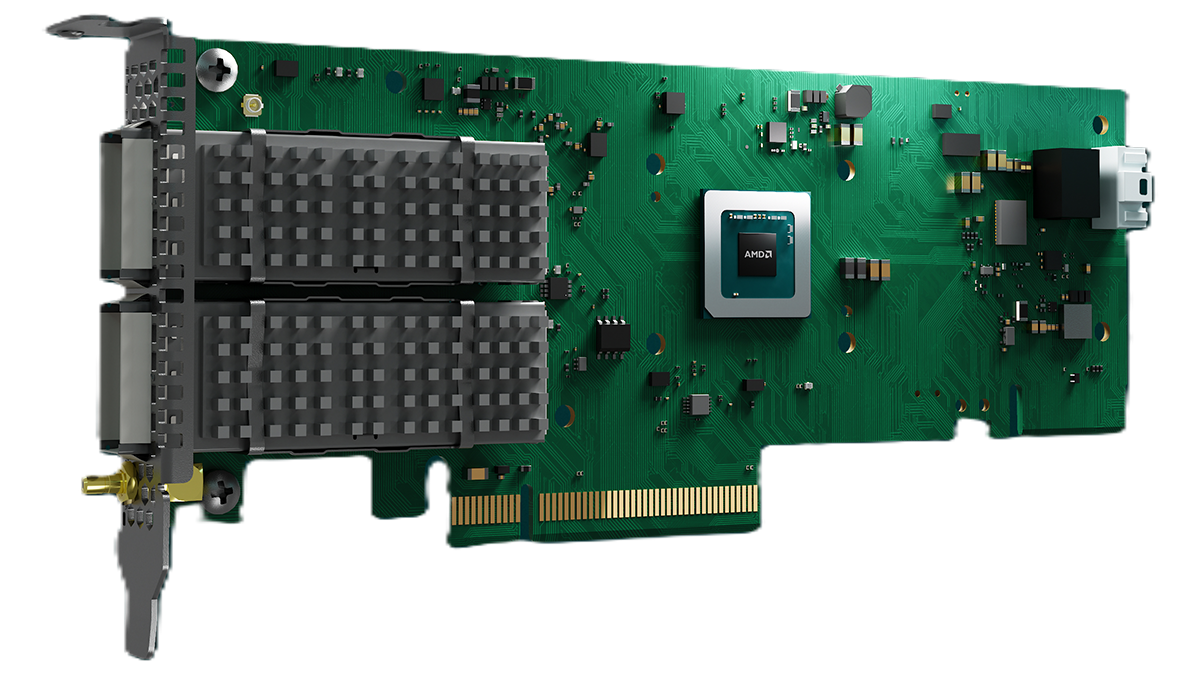
AMD Solarflare ™ X4542 Ethernet Adapter
X4542-PLUS | Dual QSFP
- Product Overview
- Dual Port at 40/50/100 GbE
- Four Ports at 1/10/25 GbE
- Form Factor: Half height, half length
- PCIe® Interface: Gen5 x8, PCIe CEM 5.0 compliant

Ultra low-latency adapters powering capital markets

AMD Solarflare X4 Ethernet adapters are designed for high-performance electronic trading environments. Built for the speed of modern markets, AMD Solarflare Ethernet adapters enable ultra-low latency and real-time telemetry, empowering high-frequency trading, risk analytics, and financial data flows with precision, scale and confidence.



4B Payload Size: Latency in ns
4B Payload Size: Latency in ns





Contact an AMD sales representative.
Explore the full suite of networking solutions designed for high-performance AI infrastructure.